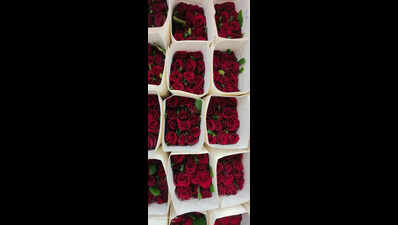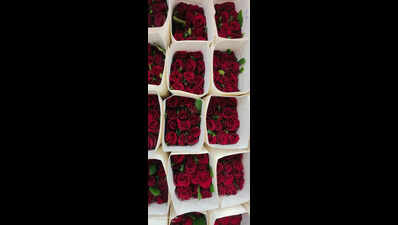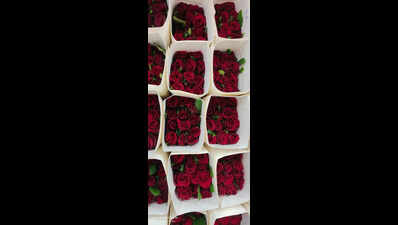Trending
Fortunes bloom for Maharashtra farmers as roses bring sweet smell of success
Pune: At the crack of dawn, Parameshwar Kumbhar (42) and his family walk into their one-acre open rose field, wearing head torches to collect blooming roses.
Over 350 families in Wadji, located two hours from Solapur, also do the same in their respective fields.
The collected roses are then packed and sold by the kilo in the Solapur market. With Wadji emerging as a hub of rose growers, it has earned the moniker ‘rose village' of Maharashtra.
"There are over 100 acres of rose plantations in our area. Each acre can yield more than 30kg of roses in a day and 8-10 tonnes of roses a year. Each farmer owning one acre of land can easily make Rs 5-6 lakh a year. Everyone is a lakhpati," said Kumbhar, who is a biotechnology postgraduate and chairman of Sri Khandoba Agro Producer Company, having 480 farmers as members.
With favourable climatic conditions coupled with modern farming techniques, Maharashtra has emerged as one of the leading producers of roses in India. Pune, Mumbai, Nashik, Solapur, and parts of Aurangabad and Satara are key rose-growing regions in the state.
There are more than 50,000 varieties of roses in the world. About 10-15,000 varieties are available in India, and over 2,000 varieties can be grown in Pune itself, said veteran rosarian Ravindra Bhide, who is also the past president of Pune Rose Society.
"Pune's climate is so good that roses can be planted even in May. On average, it is easy to find roses of 5-6 inch diameters in Pune. Flowers get bigger in colder climates. However, because of urbanisation, the number of growers in Pune and Mumbai has reduced compared to earlier," he said. The Pune Rose Society has over 1,500 members at present.
Hobbyist Avinash Bachuwar, a resident of Solapur, started growing roses during the pandemic and now has 30-40 varieties growing in his home. He also won some rose competitions. "It is not difficult to grow roses. Sunlight is very important for the flower, and the right mix of fertilisers and medicinal sprays can keep the plant healthy," he said.
Dr Dhananjay Gujarathi, a practising homeopath in Nashik, is also a rose enthusiast. At one point, he grew 450 varieties of roses in his home garden and terrace and also hybridised 2-3 varieties. "In North Maharashtra and allied areas, the weather is perfect to grow roses. The flowers that open slowly and have a longer shelf life are sold commercially," said Dr Gujarathi, who was also a consultant to Goda Park, developed under the smart city project of NMSCDL, on the bank of river Godavari.
This Valentine's Day, Pune's Maval region shipped around 2 crore Dutch roses to international markets like Australia, Japan, New Zealand, Malaysia, Singapore, Dubai, and Qatar, as well as local markets. Varieties like top secret (red) and revival (pink) are usually popular during Valentine's Day. Other varieties of Dutch roses like white avalanche, peach avalanche, sweet avalanche, and rockstar orange are also cultivated in the 1,200 polyhouses in Maval. Each polyhouse is approximately one acre in size.
In Yelse village, part of Pawnanagar in Pune's Maval region, Mukund Thakar started cultivating roses on 1/4th of an acre in 2005. He now cultivates Dutch roses on 52 acres of land. "I convinced other farmers and relatives to also join in for rose cultivation as there was demand for different colours of Dutch roses. We took loans from banks to set up polyhouses. It costs Rs 70 lakh to set up a polyhouse," said Thakar, who also runs his brand of Sai Roses.
Business has taken off in a big way for these rose farmers. Thakar also established Pawna Phul Utpadak Sangh, a collective of 411 farmers from the area. Almost 2,000 Dutch roses can be plucked each day from one acre of land, and these sell at an average of Rs 7-8 per stem.
End of Article
FOLLOW US ON SOCIAL MEDIA











